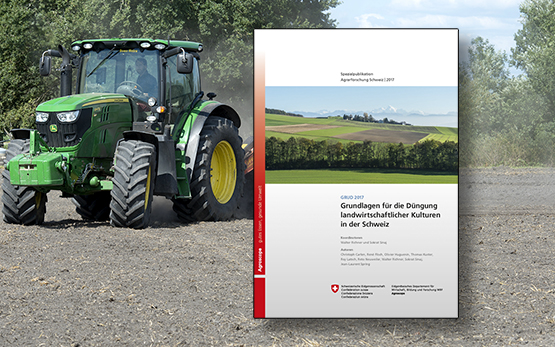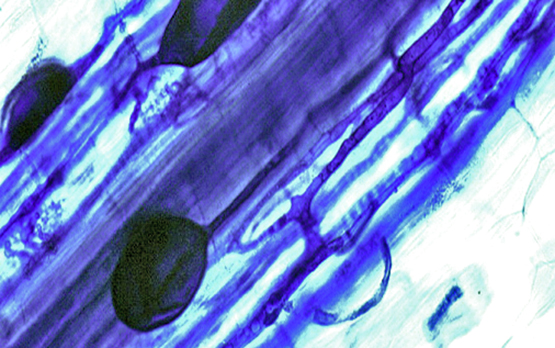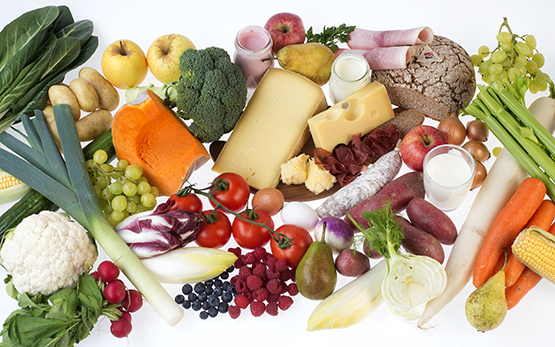Benefiting from the Jungle beneath our Feet
The soil is one of the most diverse habitats on Earth. Swiss arable and meadow soils teem with living organisms. Thousands of bacteria and up to 200 metres of mycorrhizae can be found in a single gram of soil. Fungi and bacteria in the soil form complex networks. New research findings are now showing that these microbial networks can be promoted and used in a targeted fashion, e.g. to improve the nutrient uptake of plants, or to increase soil fertility.
Reducing Environmental Pollution with Diet
Consuming less meat and alcohol, eating more plant-based foods such as cereals, potatoes, nuts and fruit, avoiding imported products whose mode of production or transport is particularly polluting, using already-available grassland for milk production and avoiding food loss are strategies with the greatest potential for reducing the environmental impacts of food. At the same time, an environmentally optimised diet of this sort would largely correspond to nutritional recommendations.









